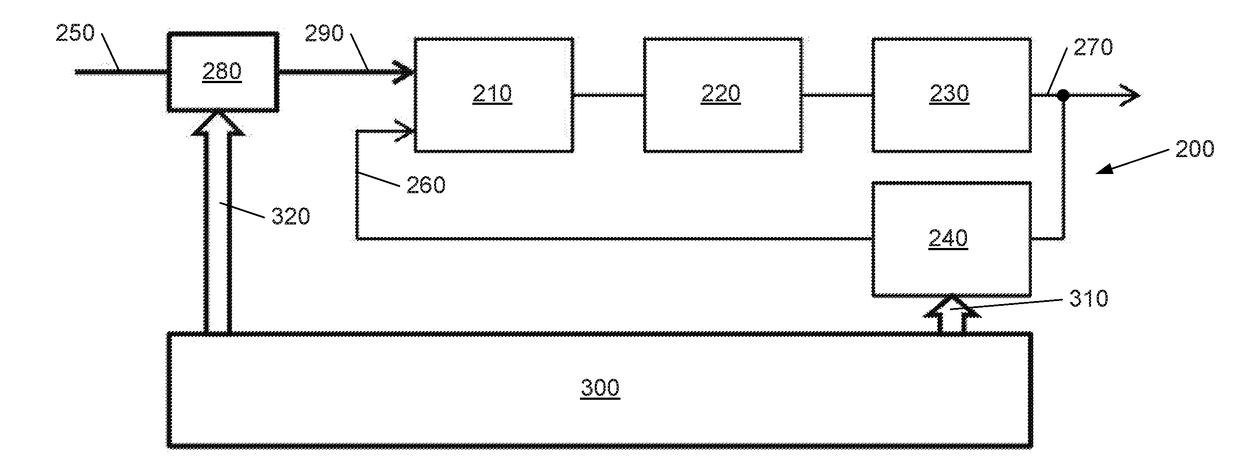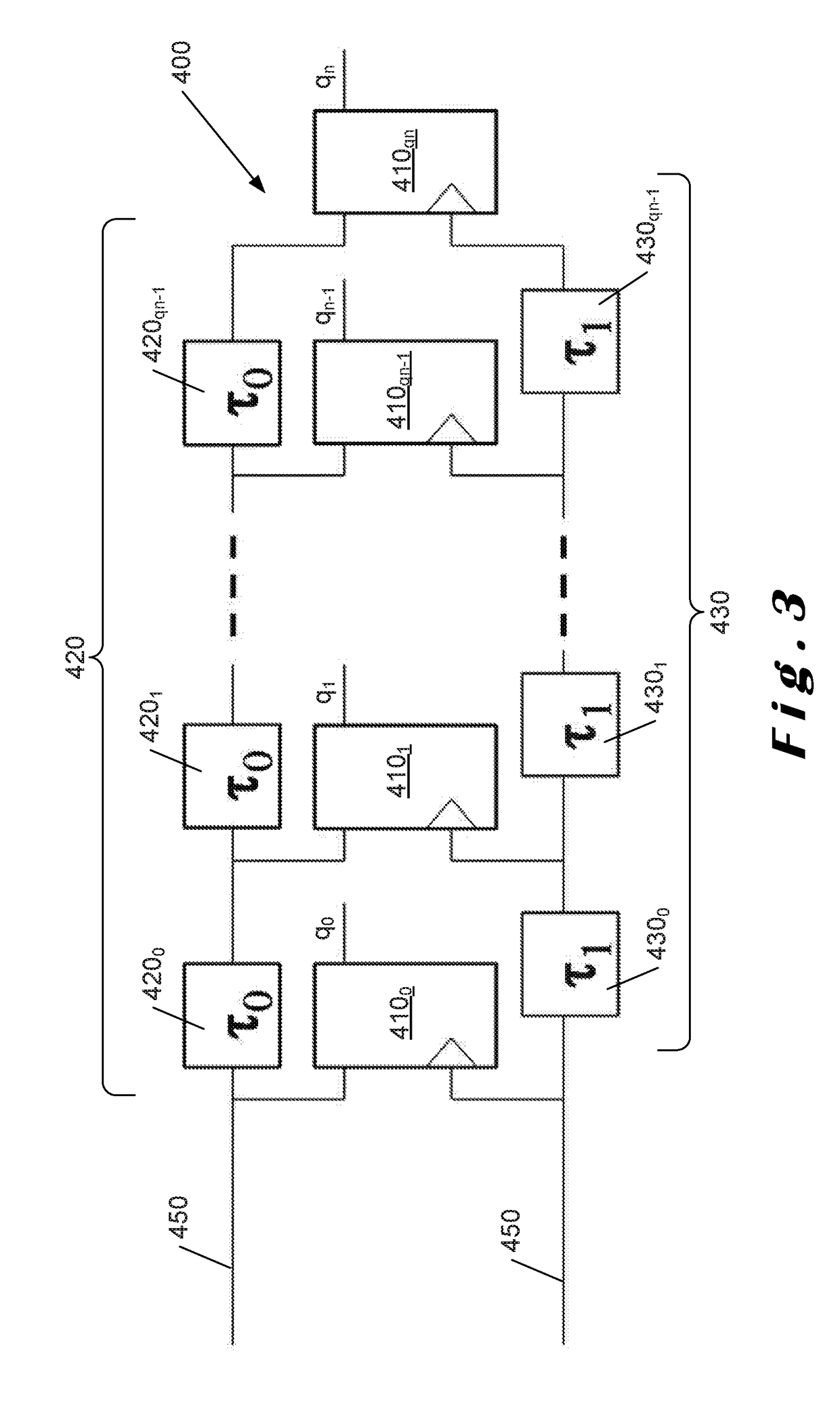Phase-Locked Loop
a phase-locked loop and loop technology, applied in the direction of digital transmission, electrical apparatus, pulse automatic control, etc., can solve the problems of affecting the efficiency of such implementations and the design of dtc for such applications, and achieve the effect of improving linearity and reducing nois
- Summary
- Abstract
- Description
- Claims
- Application Information
AI Technical Summary
Benefits of technology
Problems solved by technology
Method used
Image
Examples
Embodiment Construction
[0036]The present disclosure will be described with respect to particular embodiments and with reference to certain drawings, but the disclosure is not limited thereto. The drawings described are only schematic and are non-limiting. In the drawings, the size of some of the elements may be exaggerated and not drawn to scale for illustrative purposes.
[0037]The terms “first” and “second” refer to the order in which certain elements are described with reference to the drawings and does not necessarily refer to a temporal order.
[0038]The term “PLL” refers to an analog phase-locked loop; the term “DPLL” refers to a phase-locked loop that has a digital control, for example, where either the phase detector or the loop filter is digital (using a digital-to-time converter (DTC) and / or a time-to-digital converter (TDC)); and the term “ADPLL” refers to an all-digital phase-locked loop where the phase detector and the loop filter are implemented in digital form.
[0039]The term “integer-N PLL” ref...
PUM
 Login to View More
Login to View More Abstract
Description
Claims
Application Information
 Login to View More
Login to View More - R&D
- Intellectual Property
- Life Sciences
- Materials
- Tech Scout
- Unparalleled Data Quality
- Higher Quality Content
- 60% Fewer Hallucinations
Browse by: Latest US Patents, China's latest patents, Technical Efficacy Thesaurus, Application Domain, Technology Topic, Popular Technical Reports.
© 2025 PatSnap. All rights reserved.Legal|Privacy policy|Modern Slavery Act Transparency Statement|Sitemap|About US| Contact US: help@patsnap.com



